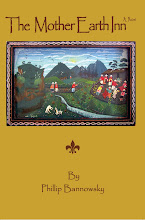I recently read Susan Cheever’s book American Bloomsbury about the Transcendentalist writers Louisa May Alcott, Ralph Waldo Emerson, Nathaniel Hawthorne, Henry David Thoreau, and Herman Melville and how they interacted with one another, including others, like their muse Margaret Fuller. Among those others on the fringes of their circle, the names Walt Whitman and Edgar Allan Poe also turned up in Cheever’s book. Whitman holds some connections for local current literary artists. Whitman lived out his final years in nearby Camden, New Jersey, where he’s buried. About 25 years ago a number of local poets, myself included, were invited to read at the Whitman graveside after local poet Douglas Morea earned an award from the Whitman Society in Camden. Poe had already earned an honored place in the history of Delaware’s literature, having interacted with his local contemporaries John Lofland and Robert Montgomery Bird.
The story of these local connections to the web of America’s literary history are buried deep in books which are rarely consulted for the purpose of making these kinds of local connections. These connections do not hold the same status as our local art history as, for example, Howard Pyle’s connection with Felix Darley before him and with the Wyeths and the artists of the Brandywine Tradition after him. Darley, who lived and died in Claymont, Delaware, illustrated works by James Fenimore Cooper, Washington Irving, Edgar Allan Poe, Nathaniel Hawthorne, Henry Wadsworth Longfellow, Clement Clarke Moore, and Charles Dickens, thus finding for him an auxiliary place in America’s literary canon. This is a story that enjoys a firm place in the history of American art.
Our institutions of learning—our schools, colleges and universities—have an important role to play in preserving those legacies of our culture as well as in teaching them to succeeding generations. Yet, when it comes to filling in these local connections, educational institutions ignore what surrounds them in the communities in which they reside in favor of teaching about the greater figures who are easily served up in the lofty annals of the “canon.” In my opinion, this policy amounts to academic laziness justified by academic snobbery. Even though I am attempting here to shame academia at whatever level into changing their educational policies and I am trying to make the case for teaching elements of our local culture by whatever means I can present, I do not expect things will change. Why should they listen to some raving bumpkin like myself? Perhaps it’s time to take things into our own hands.
For those who wish to rediscover our local literatures, especially in those regions of the United States that have a history that is older than other regions and, therefore, closer to the origins of our earliest cultural history, here are some suggestions on how to continue the process of a kind of proletarian rediscovery of a nearly lost aspect of American literature.
A good first place to look is in the various state Tour Guides that were compiled in the 1930s under the auspices of the Federal Writers’ Project of the Works Progress Administration (WPA). The WPA performed some very detailed research into many subjects on a state-by-state basis. The Tour Guides are especially valuable if one can find the original manuscripts that got boiled down for the writing of the final published versions. Usually, a state college or university or perhaps a state historical society has archived these manuscripts. Another good place to look is to look for masters or doctoral theses about local literary figures that gather dust in the libraries of local universities. Searching out the older members of a local literary community is also a good idea because old memories can often provide clues and leads that will lead to surprising corners of our local literary stories.
With a good concerted effort, we, as current literary artists and interested persons, can rediscover on whose literary shoulders we stand and why the ground beneath our literary feet is important to know, understand, and appreciate.






Just a quick note: American Bloomsbury is mostly historical fiction. Don't go looking to it for facts.
ReplyDeleteI blogged about Robert Montgomery Bird today, if you're interested.
No, Rob, you’re wrong. Susan Cheever’s book, American Bloomsbury, is not historical fiction, though, as I kind of suspect, you may not agree with Cheever’s conclusions. I point to the fact that the book has a bibliography and and index, plus its Library of Congress call # is PS255 .C6C48, which is the place where books on American literary history are found in large libraries like the one at the University of Delaware. If it had been historical fiction, it would have been catalogued as Cheever’s novel, The Cage, with the Library of Congress catalogue # PS3553.H3487 C3. See the difference?
ReplyDeleteOn the other hand, in 2007, New Directions published a novel by Roberto Bolaño entitled, Nazi Literature in the Americas. It was written as if it was literary history, complete with a fictional bibliographical notes. But the book was clearly labeled as a novel. Had Cheever done what Bolaño had, American Bloomsbury could have passed for historical fiction. But worry not, I didn’t read it for the facts but for her perspective of a slice of American literary history.
This comment has been removed by the author.
ReplyDeleteLOL - Sorry, I didn't mean it literally. I meant to say that Cheever's attempts at nonfiction failed. Many of the basic facts she presents are absolutely incorrect. The book has been denounced by many historians, scholars, and institutions, including members of the Henry David Thoreau Society, the Emerson Society, the Margaret Fuller Society - basically anyone who knows the real story of these historical figures knows that this book has little history in it. Hopefully, this information lets you know that this is not a perspective to consider.
ReplyDelete